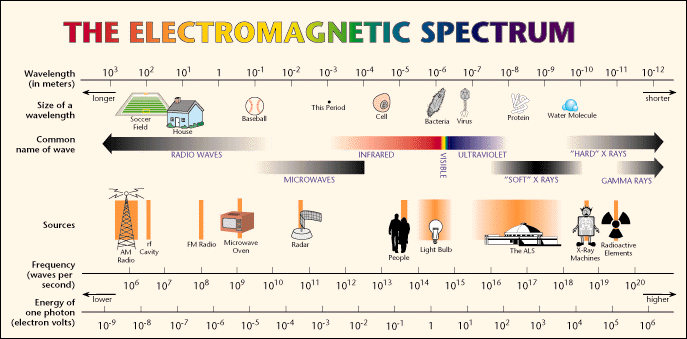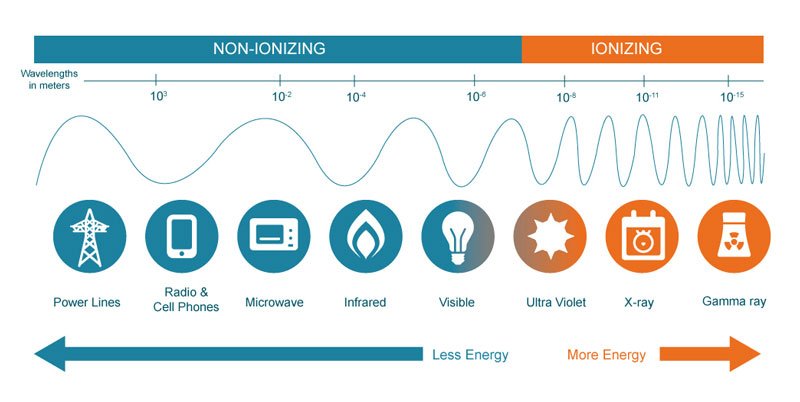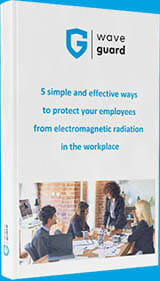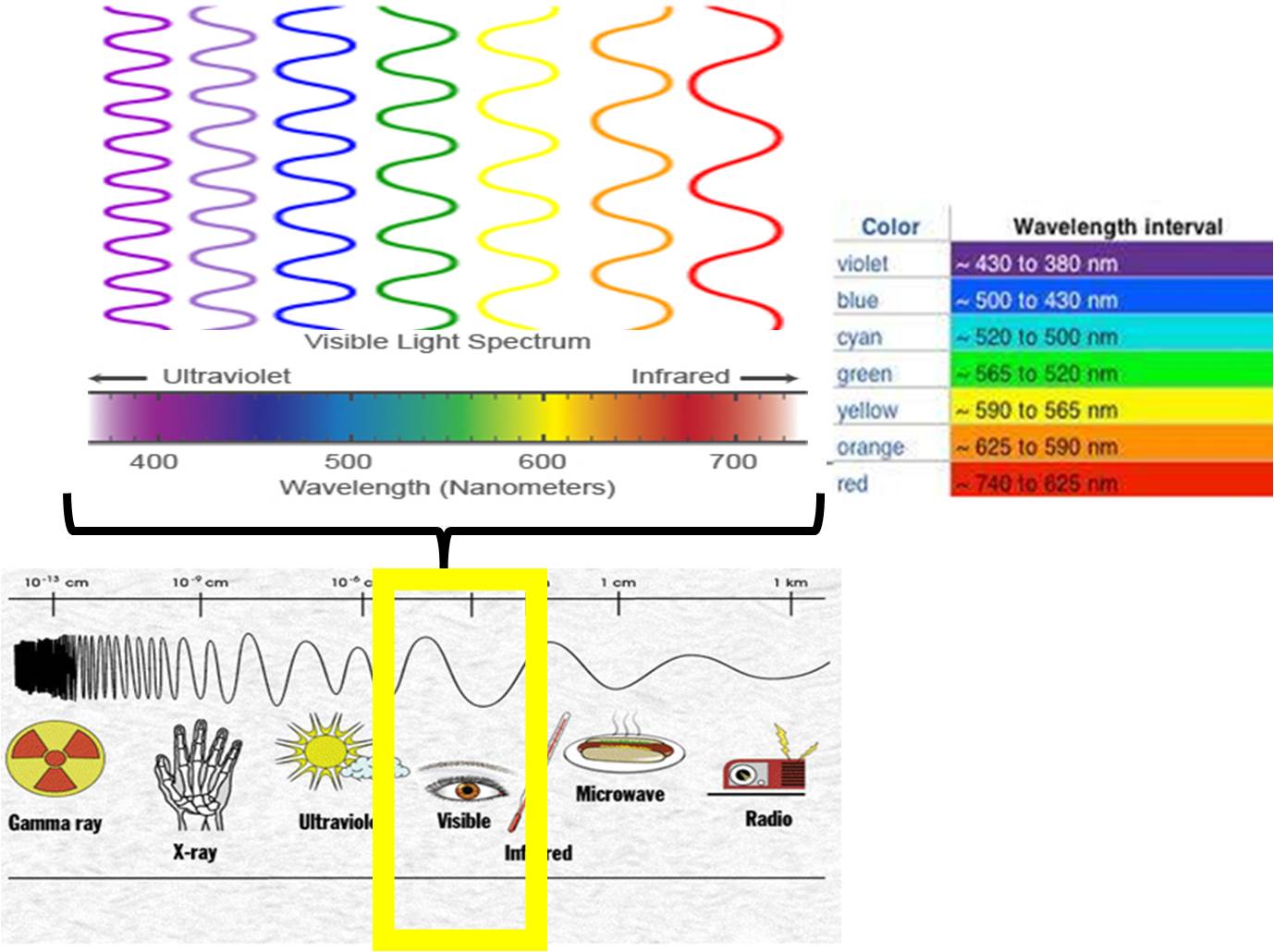The What do a rainbow, a mobile phone and a head CT scan have in common? One thing for sure. They all emit EMFs (Electromagnetic fields) or otherwise called Electromagnetic Radiation (EM radiation). We often talk about electromagnetic radiation in connection with cell phones and wireless technology. But the fact is: EM radiation is much more than just that.
In this article, we will explain some very basic concepts to help you understand where wireless technology fits in:
- What is EM radiation?
- What is the EM spectrum?
- Which types of EM radiation are there?
- What is ionising and non-ionising radiation?
- Which health effects has EM radiation?
What Is Electromagnetic Radiation?
When you sit in a car to drive to your favourite cinema, it takes you there because its engine creates enough energy to make it move. When we talk about movement, we talk about ‘kinetic energy’.
By nature, EM radiation is also a form of energy. Let’s take a look at how it all works.
Whilst you use your car to travel to where you want to be. EM radiation uses an ‘electrically charged particle’ as its vehicle. And depending on its qualities, this particle might be able to travel through the air, through any matter, including the human body, concrete walls or even vacuum. As the electrically charged particle travels, it disturbs the environment around it through ‘electromagnetic waves’.
What is Electromagnetic Spectrum?
No all EM radiation is created equal. So what makes one type of EM radiation different from another? They behave differently depending on the quality of the waves they create, which we call a ‘wavelength’ or ‘frequency’.
To illustrate this, imagine two boats travelling across the ocean. The first boat is three times bigger than the other one. Will the waves created by both boats in surrounding waters be exactly the same? No, it won’t. The size and frequency of the waves will depend on the size of the boat and the speed (the energy) it’s using to move forward.
Same applies to wavelength and frequency. The electromagnetic waves with higher energy and frequency are shorter. Whereas waves with lower energy and frequencies are longer. Based on those characteristics we can organise them in the Electromagnetic (EM) Spectrum.
What EM Radiation types are there?
We can group certain frequency ranges into different types, from lowest to highest wavelengths and the amount of energy they carry:
Power Lines
Power lines have the lowest wavelengths.
Radio Waves
Radio waves are transmitted by radio broadcasts, TV broadcasts, radars, and even mobile phones. Some examples of radio spectrum bands include extremely low frequency (ELF), ultra low frequency (ULF), low frequency (LF), medium frequency (MF), ultra high frequency (UHF), and extremely high frequency (EHF). Bluetooth, wi-fi, cordless phones,GPS and 5G all use the ultra-high frequency ranges. 5G will also use the extremely high-frequency range.
Microwaves
Microwaves can be used to broadcast information through space, as well as to warm food. Some of the 5G frequencies will be in the microwave range.
Infrared radiation
The Infrared radiation can be released as heat or thermal energy. Infrared cameras, for instance, would use this radiation to detect heat.
Visible Light
Visible light is the only part of the electromagnetic spectrum that humans can see. The colours of the rainbow would fall into the visible spectrum of electromagnetic radiation, with each colour having its own wavelength.
 UV Light
UV Light
UV light is responsible for your tan or sunburn.
X-rays
Unlike light, x-rays have higher energy and can pass through most objects, including the body. They are commonly used in Medical x-rays, mammography, CT scans, fluoroscopy and in radiotherapy (cancer treatments).
Gamma rays
Gamma rays are generated by radioactive atoms and in nuclear explosions.
Ionising vs Non-Ionising Radiation
ER radiation can be also divided into two groups based on the severity of the radiation. Ionising radiation holds a great amount of energy to remove electrons and cause atoms to break down.
Higher frequency waves such as X-rays and gamma-rays have ionising radiation. Lower frequency waves such as radio waves, do not have ionizing radiation and are grouped as non-ionising.
What are the effects of EM radiation on health?
Just because radiation is non-ionising doesn’t mean that it doesn’t affect our biology.
EM radiation emitted from mobile phones, wifi routers, and similar wireless devices have been to have biological effects on our cells, including increased inflammation and oxidative stress, fertility or cognitive function.
You can read the following articles related to this topic:
- Are all EMFs harmful?
- How EMFs affect children’s health?
- 5G: Is the health of your family at risk?
- What is mobile phone Specific Absorption Rate (SAR): safety and health concerns
- Emissions from mobile phones exceed safety limits
Are you interested to find out how Waveguard can help you reduce the effects of electromagnetic radiation from wireless devices in your home, office and on-the-go? Then contact us.
Sources
- https://www.medicalnewstoday.com/articles/219970.php
- https://www.livescience.com/50326-what-is-ultraviolet-light.html
- https://chem.libretexts.org/Bookshelves/Physical_and_Theoretical_Chemistry_Textbook_Maps/Supplemental_Modules_(Physical_and_Theoretical_Chemistry)/Spectroscopy/Fundamentals_of_Spectroscopy/Electromagnetic_Radiation
- https://marine.rutgers.edu/cool/education/class/josh/em_spec.html
- https://www.nibib.nih.gov/science-education/science-topics/x-rays
- https://www.lifewire.com/5g-spectrum-frequencies-4579825
- World Health Organization (WHO), IARC Classifies Radiofrequency electromagnetic fields as possibly carcinogenic to humans. Press Release, May 31, 2011. http://www.iarc.fr/en/media-centre/pr/2011/pdfs/pr208_E.pdf
- https://www.who.int/peh-emf/about/WhatisEMF/en/







